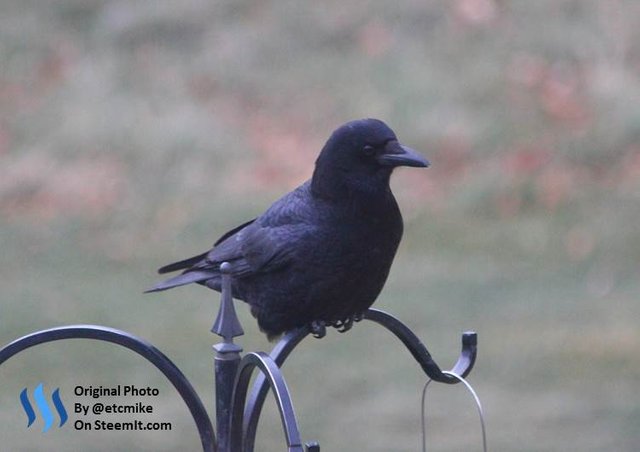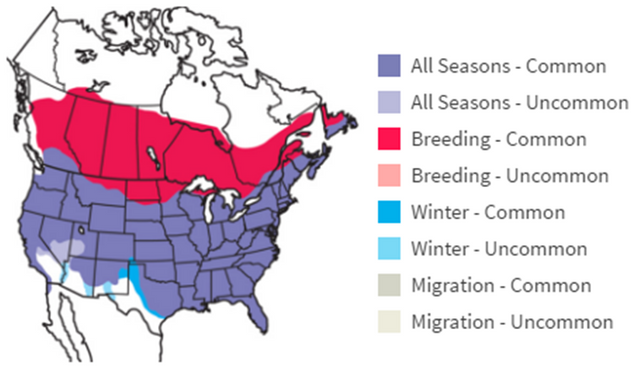Citizen Science: Contributing to Scientific Research w/Original Photo
Citizen science projects like North American Breeding Bird Survey and Project FeederWatch aided Cornell Lab researchers in learning about the effects of the West Nile virus on bird populations. The population of American Crows was particularly hard hit as the virus swept across North America.
American Crow

Original Photo
American Crows are quite common across the United States and Canada.

Image Source
West Nile Virus
West Nile virus first appeared in the United States, New York City area, in the summer of 1999. The virus is spread among hosts by mosquito bites. According to the Center for Disease Control (CDC) 20% of people infected develop flu-like symptoms and about 1% of infected people become seriously ill. The virus spread across the North American continent in just five years.
Impact of West Nile Virus
Many bird species, from crows and jays to chickadees, proved to be susceptible to the West Nile virus. Initial tests found that the virus was 100% fatal to crows. In just 4 months after the virus first appeared about 5,500 crows died. And after the virus had spread across the North American continent millions of birds from various species had died.
Finding from Citizen Science Projets
Cornell Lab researchers used data from the Citizen Science projects like North American Breeding Bird Survey and Project FeederWatch to monitor the impact of West Nile virus on various bird species. Because of the Citizen Science projects researchers have 20 years of data records along the nearly 700 bird migration routes across the North American continent.
The "Dilution Effect"
This dilution effect was first noted in the various studies of the spread of Lyme disease carried mainly by ticks. A pattern of ecological interference was observed. In a species-rich ecology there are a greater number of different species the tick (or mosquito in the case of West Nile virus) carrying the virus is more likely to bite a species that is relatively immune.
Cornell Lab researchers found that American Crow populations in more species-rich ecosystems were less effected by West Nile virus than American Crow populations in less species diverse ecosystems.
Westward Progression
A pathogen that kills quickly has less of a chance of spreading to other remote populations than one that is not as lethal.
Cornell Lab researchers found that fatality rate among American Crows dropped as the virus spread westward across the continent.
Source
Counting Crows: The Impact Of The West Nile Virus, 15 October 2010 by Hugh Powell from The Cornell Lab of Ornithology
Related
My previous Citizen Science: Project FeederWatch -- Count #05 Report w/Original Photos where I mentioned West Nile virus in relation to American Crow counts I have observed
Use of Original Photos
I used the SteemIt icon in my photo credit to indicate these photographs were originally posted on SteemIt.
The photographs in this post are free to be used by anyone as long as the photo credit is left on the photographs.